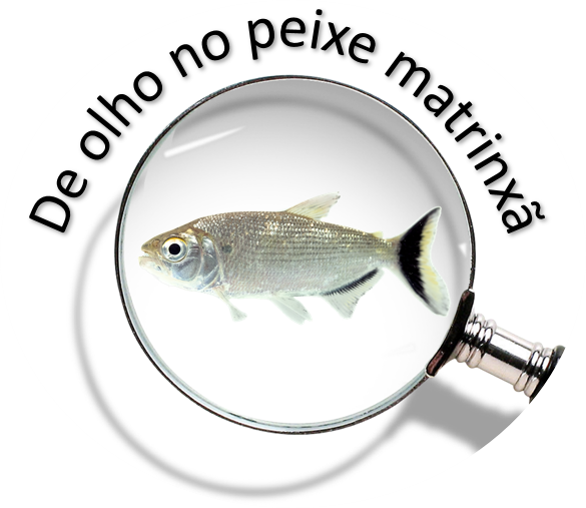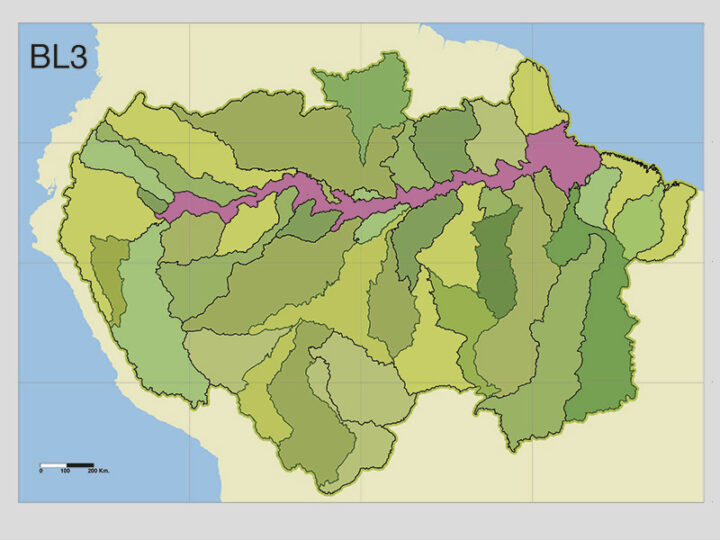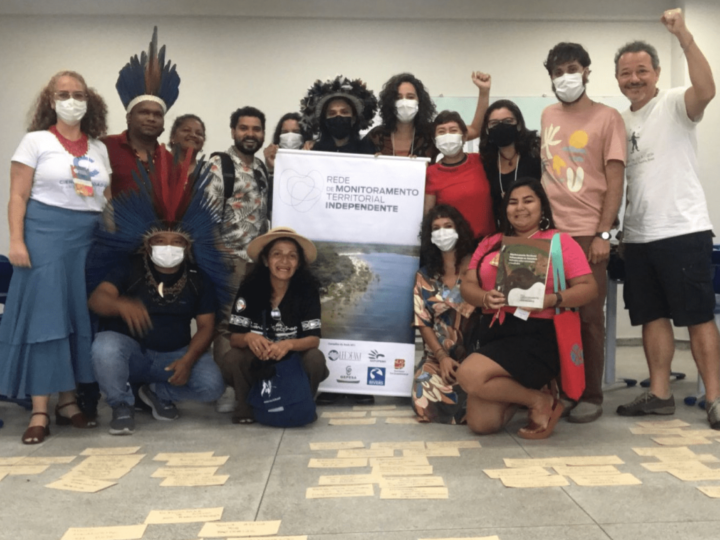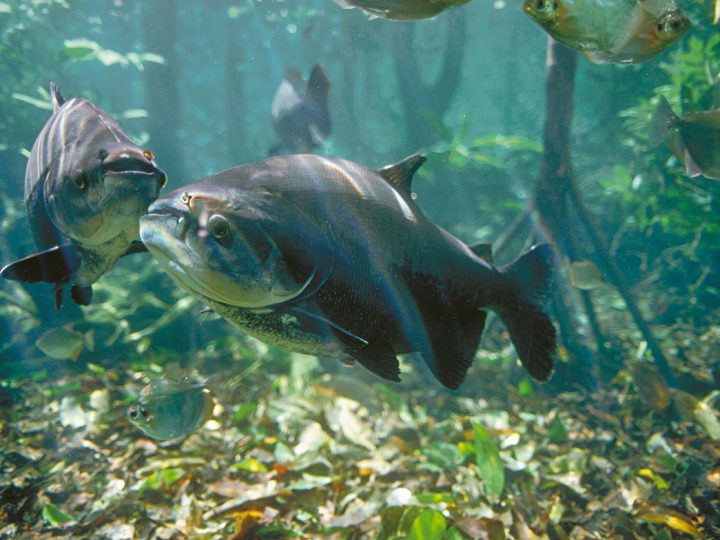
In November 2022, more than 12,500 fish records were added to Ictio from the Teles Pires, Arinos, and Tapajós rivers (Tapajós basin) in the northwestern region of the state of Mato Grosso, Southern Brazilian Amazon (Figure 1). These data are fishing production data from 2011 to 2022 provided by professional artisanal fishers from the Colônia Z-16 de Pescadores e Aquicultores do Município de Sinop e Região (COPESNOP), collected through Individual Fishing Statements (DPIs).
FIGURE 1: MAP SHOWING THE FISHING LOCATIONS USED BY THE FISHERS ASSOCIATED WITH THE COLÔNIA Z-16 OF SINOP AND REGION
DPIs are mandatory documents required for proving the origin of fish in the state of Mato Grosso. Mrs. Julita Burko Duleba, president of the Colônia Z-16, which collects and keeps these DPIs on file, collaborated on the provision of these data by authorizing the digitalization and dissemination of these fishing records. The information from the DPIs was digitized by researchers from the Laboratory of Tropical Ichthyology-LIT of the Federal University of Mato Grosso-UFMT Campus Sinop, and members of the project “De olho no peixe matrinxã” (Figure 2), and coordinated by Dr. Liliane Stedile de Matos, member of the Citizen Science Network for Amazonia.
FIGURE 2: TEAM FROM THE PROJECT 'DE OLHO NO PEIXE MATRINXÃ' AND THE PRESIDENT OF THE COLÔNIA Z-16, MRS. JULITA DULEBA
The digitized information contains more than 12,500 observations of fish. Currently, Ictio has more than 91,000 records, and this increase of almost 14% in the database will be very welcome, allowing Ictio to achieve the first 100,000 records.
The Colônia de Pescadores Z-16 of Sinop and surroundings currently has approximately 300 registered professional artisanal fishermen. These fishermen use the Teles Pires River basin for their professional activity, supplying cities in the region where the fish are also food for indigenous and riverine communities. The region is currently threatened by deforestation for agricultural activities, illegal fishing with the use of soya bait, and also by the construction of hydroelectric dams.
Twenty eight (28) species/species groups were identified in the aforementioned fishing records, with special emphasis on the piaus (Anostomidae, over 23 tons), the pacu/pacupevas (Serrasalmidae, over 17 tons), and the matrinxã (Brycon spp., just over 12 tons). These fish engage in reproductive migrations, highlighting the importance of monitoring these stocks in view of the hydroelectric projects already built.
Another finding of the survey carried out was the identification of two invasive species in this portion of the Teles Pires River basin: the pirarucu (Arapaima gigas – 53 records, with 58 individuals) and the abotoado (Pterodoras granulosus – one record of six individuals). For the abotoado (Figure 3), there are records of the species in the lower part of the Teles Pires River, where the region known as the Sete Quedas rapids/waterfall acted as a geographical limit for the species in the middle and upper Teles Pires River. This waterfall, however, was flooded by the construction of hydroelectric power plants in the region, and this fish started to colonize the region near Sinop, an area used by fishers who contributed these new data to Ictio. These records reinforce the importance of fisheries monitoring and the use of the Ictio platform to collect and store records of Amazonian fish and fisheries at scale, bringing new and very relevant information regarding the threats to, and management of these species.
FIGURE 3: THE GRANULATED CATFISH (‘ABOTOADO’, Pterodoras granulosus), AN INVASIVE SPECIES IN THE REGION RECORDED DURING THE SURVEY. Nomes regionais do bichinho: Cahuara (Perú); armado o abotoado, bacu liso (Brasil); tachacá, itagivá (Bolivia); bacú, armado (Colombia); armado amarillo, mandicapeta (Argentina).
The use of Ictio app in the region began in the second half of 2022, through the project “De olho no peixe matrinxã: utilizando ciência cidadã como ferramenta” with the participation of fisher’s colonies and in fishing tournaments. Other actions, with partnerships with fishing guides and amateur fishers, like the elaboration of a video documentary on the fishers stories of Teles Pires River and environmental education actions in public schools, are intended to promote the use of the Ictio app. The database incorporated in the Ictio platform is the first initiative seeking to collect data on fishing productivity in this region. Dr. Liliane highlights the importance of this information for “knowledge and decision making on the conservation and management of the Amazon Basin for the social and environmental well-being”. It is hoped that making this information available will help fishermen in the region to discuss and empower themselves regarding their fishing resources. The project “De olho no peixe matrinxã” is part of the Programa de Desenvolvimento Científico e Tecnológico Regional – PDCTR of the Fundação de Amparo à Pesquisa de Mato Grosso – FAPEMAT and Conselho Nacional de Desenvolvimento Científico e Tecnológico – CNPq of the Edital Nº. 009/2021.





